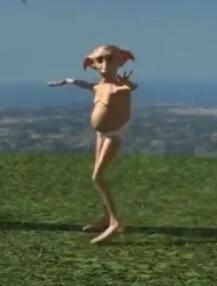In the vast realm of the internet, a peculiar and captivating phenomenon has emerged – the fascination with cursed aesthetic images. These enigmatic visuals, often characterized by an eerie and unsettling atmosphere, have garnered a dedicated following. As users share and explore these images across various platforms, a subculture has formed around the mysterious allure of the cursed aesthetic. In this article, we will delve into the origins, characteristics, and psychological aspects of cursed aesthetic images, as well as their impact on contemporary digital culture.

Origins and Evolution:
The term “cursed aesthetic” gained popularity on social media platforms, particularly Tumblr and Twitter, where users began curating and sharing images that invoked an unsettling or eerie feeling. The images range from distorted photographs and glitch art to surreal and cryptic illustrations. The trend has since expanded to platforms like Instagram and TikTok, where users create and consume content that falls under the umbrella of cursed aesthetics.
One key aspect of cursed aesthetic images is their ability to elicit a sense of discomfort and curiosity simultaneously. The origin of the term “cursed” in this context can be traced back to the idea that the images possess a kind of supernatural or paranormal quality. The term is not to be taken literally; instead, it signifies the inexplicable feeling that these images evoke.
Characteristics of Cursed Aesthetic Images:
Cursed aesthetic images often share common characteristics that contribute to their mystique and allure. These characteristics include:
- Distortion and Manipulation: Many cursed aesthetic images involve intentional distortion and manipulation of visuals. This can include warped faces, glitched landscapes, and altered color palettes, creating an otherworldly and disconcerting effect.
- Symbolism and Ambiguity: Cursed images often incorporate symbolism and ambiguity, leaving viewers to interpret the meaning behind the visuals. This ambiguity contributes to the unsettling nature of the images, as viewers grapple with the unknown.
- Nostalgic Elements: Some cursed images tap into a sense of nostalgia, incorporating elements reminiscent of bygone eras. This blending of the familiar with the uncanny adds an extra layer of complexity to the viewer’s experience.
- Dark Humor: A subset of cursed aesthetic images includes dark or morbid humor. These images may juxtapose unsettling visuals with humorous captions or scenarios, creating a surreal and thought-provoking juxtaposition.
Psychological Fascination:
The psychological appeal of cursed aesthetic images lies in their ability to evoke a range of emotions and thoughts. The human brain is wired to seek patterns and make sense of the environment, and when faced with ambiguous or distorted visuals, it triggers a cognitive dissonance that can be both uncomfortable and intriguing.
The uncanny, a concept introduced by Sigmund Freud, refers to something strangely familiar yet simultaneously foreign. Cursed aesthetic images often embody this quality, prompting viewers to confront the boundary between the known and the unknown. The discomfort caused by the uncanny can be paradoxically appealing, as it challenges the viewer’s perceptions and invites them to explore the depths of their own psyche.
Moreover, the internet culture surrounding cursed aesthetics creates a sense of community among enthusiasts. The shared experience of exploring and discussing these images fosters a digital subculture that thrives on the communal engagement with the mysterious and the bizarre.
Impact on Digital Culture:
Cursed aesthetic images have become an integral part of contemporary digital culture, influencing various online communities and even inspiring artists across different mediums. The impact of this aesthetic trend can be observed in several aspects:
- Meme Culture: Cursed aesthetic images have seamlessly integrated into meme culture, where users leverage their uncanny nature to create humorous and shareable content. The ability to elicit both discomfort and amusement has turned these images into meme-worthy material.
- Artistic Expression: Artists and creators have embraced the cursed aesthetic as a form of artistic expression. From digital art to photography and even fashion, the influence of cursed aesthetics can be seen in various creative endeavors.
- Online Communities: Dedicated online communities and forums have emerged where enthusiasts share and discuss their favorite cursed aesthetic images. These spaces foster a sense of camaraderie among individuals with a shared appreciation for the mysterious and unconventional.
- Influence on Media Production: The influence of cursed aesthetics extends beyond the realm of internet subcultures. Elements of this aesthetic have found their way into mainstream media, influencing the visual language of films, music videos, and advertising.
Conclusion:
Cursed aesthetic images, with their mysterious allure and uncanny nature, have carved a niche in the vast landscape of digital culture. The trend’s origins on social media platforms have led to the formation of a dedicated community of enthusiasts who appreciate the discomfort and curiosity that these images provoke. As the influence of cursed aesthetics continues to permeate various facets of digital culture, it serves as a testament to the ever-evolving nature of online expression and the enduring fascination with the enigmatic and the strange.
